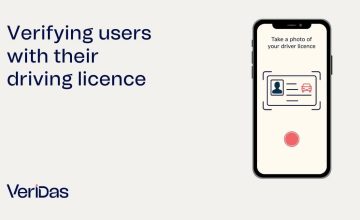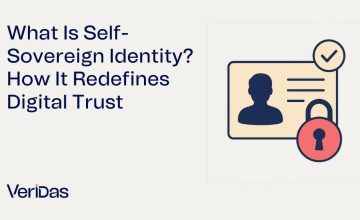Digital onboarding combines biometric, knowledge-based authentication, and AI automation for secure, compliant user verification. For instance, in finance, banks employ facial recognition and one-time passwords for online security. Automation, powered by AI, detects suspicious activities during registration, preventing fraudulent accounts. Accessibility across devices ensures convenient, secure identity verification, enhancing user experience and trust in digital interactions.

What are the benefits of digital onboarding?
Digital onboarding offers numerous benefits, making it a preferred method for both businesses and customers. Firstly, it enhances convenience by enabling individuals to complete the onboarding process remotely, reducing the need for physical visits to brick-and-mortar locations. This accessibility increases customer satisfaction and expands the reach of businesses to a broader audience.
Moreover, digital onboarding improves efficiency through automation, reducing the time and resources required to verify customer information. Advanced technologies like artificial intelligence facilitate real-time decision-making, streamlining the process and minimizing manual intervention.
Additionally, digital onboarding enhances security by implementing robust identity verification measures. Biometric authentication, knowledge-based methods, and AI-driven fraud detection mechanisms ensure the integrity of customer data and prevent unauthorized access.
Furthermore, digital onboarding enables seamless integration with additional services and functionalities, such as electronic signatures and digital payments. This integration simplifies the customer journey, allowing individuals to access and utilize products or services more effectively.
Overall, the benefits of digital onboarding include enhanced convenience, efficiency, security, and integration, driving improved customer experiences and business outcomes in the digital age.
What is the difference between digital onboarding and traditional onboarding?
Digital onboarding differs from traditional onboarding in its remote, technology-driven approach. While traditional onboarding relies on in-person interactions and paper documentation, digital onboarding enables individuals to register and access services entirely online.
This distinction offers unparalleled convenience and accessibility, allowing users to complete the process remotely via smartphones or computers without the constraints of physical visits or paper forms. Moreover, digital onboarding integrates advanced technologies such as biometric authentication and artificial intelligence to enhance security and streamline the process.
Automation reduces time and resources required for onboarding, offering businesses a more efficient and cost-effective solution. Overall, digital onboarding revolutionizes the onboarding experience, catering to the needs of businesses and customers in the digital era.
What is an example of digital onboarding?
John, a new customer, visits the bank’s website to open a savings account. He begins the digital onboarding process by filling out an online application form, providing his personal details such as name, address, date of birth, and contact information.
As part of the identity verification process, John uploads scanned copies of his identification documents, such as his driver’s license or passport, directly through the website. The system then utilizes advanced optical character recognition (OCR) technology to extract relevant information from the documents and verify the accuracy of the provided details.
To further enhance security, the bank incorporates biometric authentication methods. John is prompted to take a selfie using his smartphone camera, which is compared against the photo on his identification document to ensure a match.
Once John’s identity is successfully verified, the system generates a secure one-time password (OTP) and sends it to his registered mobile number. John enters the OTP into the website to authenticate his identity and complete the account opening process.
With digital onboarding, John has successfully opened a savings account without ever stepping foot inside a physical branch. The entire process was convenient, efficient, and secure, showcasing the benefits of digital transformation in banking.
What is digital onboarding in banking?
Digital onboarding in banking refers to the process of opening a new account or accessing banking services entirely online, without the need for in-person interactions or paper-based documentation. It involves utilizing digital channels such as websites, mobile applications, or other online platforms to collect customer information, verify identities, and establish accounts remotely.
In digital onboarding, customers typically fill out online application forms, providing personal details such as name, address, date of birth, and contact information. They may also be required to upload scanned copies of identification documents, such as driver’s licenses or passports, which are then verified electronically using advanced technology like optical character recognition (OCR) to extract relevant information.
Biometric authentication methods such as facial recognition may be employed to enhance security and verify the identity of customers remotely. Additionally, one-time passwords (OTPs) or other authentication codes may be sent to the customer’s registered mobile number or email address for further verification.
Overall, digital onboarding in banking offers convenience, efficiency, and security to customers, allowing them to access banking services anytime, anywhere, using digital devices. It streamlines the account opening process, reduces the need for physical visits to bank branches, and enhances the overall customer experience in the digital age.
Is digital onboarding safe?
Digital onboarding is generally considered safe when implemented with robust security measures and compliance with relevant regulations. However, like any online transaction or interaction, there are potential risks that need to be addressed.
To ensure the safety of digital onboarding processes, banks and financial institutions employ various security measures, including:
- Encryption: All data transmitted during the onboarding process, including personal information and identification documents, should be encrypted to protect it from unauthorized access.
- Multi-factor authentication (MFA): Implementing MFA adds an extra layer of security by requiring users to provide multiple forms of verification, such as a password, OTP, or biometric scan, before accessing their accounts.
- Identity verification: Utilizing advanced technologies like biometric authentication, facial recognition, or knowledge-based authentication helps verify the identity of customers during the onboarding process, reducing the risk of identity theft or fraud.
- Fraud detection systems: Banks employ AI-driven fraud detection systems to monitor and analyze user behavior, flagging suspicious activities or transactions for further investigation.
- Compliance with regulations: Banks must adhere to regulatory requirements, such as Know Your Customer (KYC) and Anti-Money Laundering (AML) regulations, to verify the identity of customers and prevent financial crimes.
While digital onboarding offers convenience and efficiency, customers should also take precautions to ensure their own safety, such as using secure internet connections, keeping passwords and authentication codes confidential, and regularly monitoring their accounts for any unauthorized activity.
Overall, when implemented with strong security measures and compliance protocols, digital onboarding can be a safe and secure way for customers to access banking services online.
How important is onboarding in a company?
Onboarding is crucial for companies as it sets the tone for a new employee’s experience and impacts their long-term success within the organization. Effective onboarding provides numerous benefits:
- Employee Engagement: A well-structured onboarding process helps new employees feel welcomed, valued, and engaged from day one. This fosters a positive attitude towards their role and the company, increasing their motivation and commitment to perform well.
- Productivity and Performance: Proper onboarding accelerates the time it takes for new hires to become fully productive in their roles. By providing clear expectations, training, and resources, companies can equip employees with the knowledge and skills they need to contribute effectively to the team and achieve their objectives sooner.
- Retention: Employees who experience a positive onboarding process are more likely to feel satisfied with their job and committed to staying with the company long-term. Effective onboarding reduces turnover rates by creating a supportive environment where employees feel valued and connected to the organization’s mission and culture.
- Cultural Integration: Onboarding plays a crucial role in integrating new employees into the company culture. It helps them understand the company’s values, norms, and expectations, enabling them to adapt and align their behavior accordingly. This promotes a sense of belonging and cohesion within the team.
- Employer Branding: A strong onboarding experience contributes to a positive employer brand reputation. When new employees have a great experience during onboarding, they are more likely to share their positive experiences with others, helping to attract top talent to the organization.
In summary, onboarding is essential for companies as it impacts employee engagement, productivity, retention, cultural integration, and employer branding. Investing in a comprehensive onboarding process ensures that new employees are set up for success and contributes to the overall growth and success of the organization.
Digital Onboarding with Veridas
Mitigate fraud and ensure regulatory compliance while enhancing customer acquisition rates. Streamline your onboarding process with Veridas, improving convenience and user experience. Safeguard your business from unauthorized access and identity theft, saving time and resources for value-driven growth.
The Veridas’s Digital Onboarding process increases conversion rates, opens the door to authentication, reduces fraud, improves user experience and complies with regulations.






![[FREE DEMO]: Find out how our technology works live](https://no-cache.hubspot.com/cta/default/19918211/9d2f027d-2e80-4f2b-8103-8f570f0ddc7c.png)

















